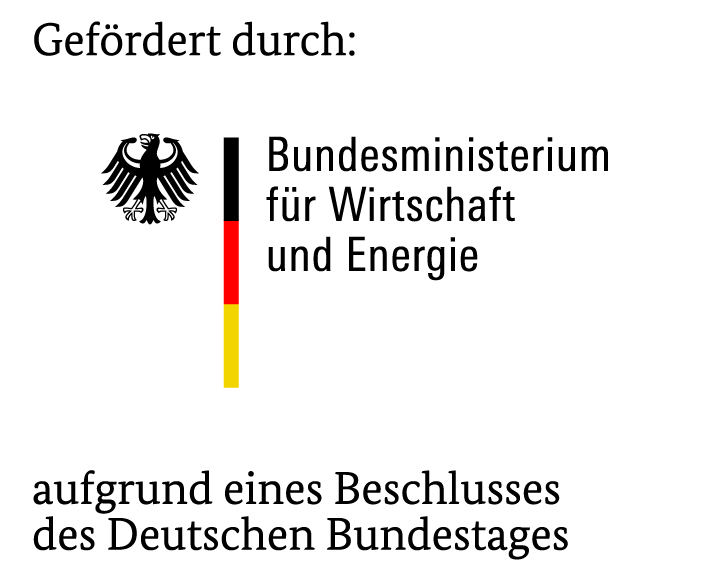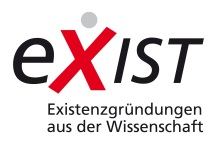IDentUS
Problem
Silicone based impression-taking of prepared teeth is well-established but potentially less reliable, error-prone and inefficient for computer aided design and manufacturing (CAD/CAM) of dental prosthetics. Intraoral optical scanners have been introduced to increase efficiency of CAM but no breakthrough occurred so far. An accurate impression of the tooth preparation is highly important for the final fit of the prosthesis. Therefore, retraction cords or electro-surgery are commonly used to invasively uncover subgingival margins prior to the impression. These methods may lead to inflammation or permanent damage of the gum. In addition, bleeding from inflamed gingiva, saliva, air bubbles or other particles can decrease the accuracy outcome of both the conventional and optical impression. Digitizing a gingiva-covered margin is an infeasible task due to the fact that optical waves can hardly penetrate gingival tissue.
Our Solution
High frequency ultrasound (HFUS) has been recently introduced by out group as an alternative to optical scanning. HFUS is less sensitive against oral fluids and in principal able to penetrate gingiva non-invasively. Although HFUS-systems have been used in other medical fields, none of them suits the challenging requirements and high accuracy demands for dental impressioning. Hence, our goals are to develop a new ultrasonic technology, which is able to scan supra- and subgingival dental hard- as well as soft-tissue structures and to integrate it into the CAD/CAM-process for dental restorations. Whereas in case of optical digitization the dentist usually has to wait until bleeding and swelling subside, an HFUS-based impression can be performed within the same session. Thereby ultrasound-based scanning will lead to a more cost-efficient, time-saving and pain-free process in daily dental practice. As part of the BMWi project IDentUS and the cooperation with the RWTH spin-Off whitesonic GmbH, the preliminary work of the project IDA for the development of an ultrasound-based scanning system (Patent WO2007137826) will be continued and the applicability of the new technology will be demonstrated.
Transfer of Technology
In addition to the development of the prototype, the marketing of the innovative ultrasound technology has been prepared as part of the BMWi project IDentUS. A team of four engineers and three mentors from medicine, technology and business concepted a marketing and sales strategy as well as the company financing. The final goal of the first EXIST funding phase was the elaboration of a business plan and the founding of the company. The spin-off whitesonic GmbH, founded in the Chair of Medical Engineering at RWTH Aachen University, continues the development and marketing of the innovative ultrasound technology for dentists.
Funding


The project IDentUS is funded by the German Federal Ministry for Economic Affairs and Energy as part of the EXIST research transfer.
(Project term: 04/2014 – 09/2015)
Partner
- whitesonic GmbH
- Department of Prosthodontics, Implantology and Biomaterials, University Hospital Aachen
- SurgiTAIX AG
IDentUs at the International Dental Show (IDS) 2015 in Cologne
You can find more information here (German).
Publications
- L. Bohner, D. Habor, F. Gremse, P. Tortamano, S. Wolfart & J. Marotti: Accuracy of High-Frequency Ultrasound Scanner in Detecting Peri-implant Bone Defects. Ultrasound in Medicine & Biology, 2019, 45(3), pp. 650-659 [DOI: 10.1016/j.ultrasmedbio.2018.10.030]
- L. Bohner, D. Habor, P. Tortamano, K. Radermacher, S. Wolfart & J. Marotti: Assessment of Buccal Bone Surrounding Dental Implants Using a High-Frequency Ultrasound Scanner. Ultrasound in Medicine and Biology, 2019, 45(6), pp. 1427-1434 [DOI: 10.1016/j.ultrasmedbio.2019.02.002]
- J. Marotti, S. Neuhaus, D. Habor, L. Bohner, S. Heger, K. Radermacher & S. Wolfart: High-Frequency Ultrasound for Assessment of Peri-Implant Bone Thickness. Journal of Clinical Medicine, 2019, 8(10), pp. 1539 [DOI: 10.3390/jcm8101539]
- J. Marotti, J. Broeckmann, F. Chuembou Pekam, L. Praça, K. Radermacher & S. Wolfart: Impression of Subgingival Dental Preparation Can Be Taken with Ultrasound. Ultrasound in Medicine & Biology, 2019, 45(2), pp. 558-567 [DOI: 10.1016/j.ultrasmedbio.2018.09.027]
- L. Praça, F. Chuembou Pekam, R.O. Rego, K. Radermacher, S. Wolfart & J. Marotti: Accuracy of single crowns fabricated from ultrasound digital impressions. Dental Materials, 2018, 34(11), pp. e280-e288 [DOI: 10.1016/j.dental.2018.08.301]
- T. Vollborn: Intraoraler Ultraschallmikroscanner für die digitale Abdrucknahme von Zahnpräparationen. In: S. Leonhardt, K. Radermacher & T. Schmitz-Rode (ed.): 44, Aachener Beiträge zur Medizintechnik (ISBN 978-3-8440-5541-2), Shaker, 2017, pp. 218
- F. Chuembou Pekam, J. Marotti, S. Wolfart, J. Tinschert, K. Radermacher & S. Heger: High-frequency Ultrasound as an Option for Scanning of Prepared Teeth: an in vitro Study. Ultrasound in Medicine and Biology, 2015, 41, pp. 309-316 [DOI: 10.1016/j.ultrasmedbio.2014.08.023]
- T. Vollborn, D. Habor, F. Chuembou Pekam, S. Heger, J. Marotti, S. Reich, S. Wolfart, J. Tinschert & K. Radermacher: Ein Konzept zur digitalen intraoralen Abformung mit ultraschallbasierter Scantechnologie. Quintessenz Zahntech, 2015, 41(3), pp. 298-308
- T. Vollborn, D. Habor, F. Chuembou Pekam, J. Marotti, J. Tinschert, S. Wolfart, S. Heger & K. Radermacher: Ultrasonic Microscanning for Digital Dental Impressioning. Proc. IUPESM 2015 WORLD CONGRESS ON MEDICAL PHYSICS & BIOMEDICAL ENGINEERING, 2015, pp. 519
- F. Chuembou Pekam, D. Habor, K. Radermacher & S. Heger: TPS-RPM based segmentation of three-dimensional high frequency ultrasound SAFT images for CAD/CAM based tooth digitization. IEEE International Ultrasonics Symposium Proceedings, 2014, pp. 2347-2350 [DOI: 10.1109/ULTSYM.2014.0585]
- T. Vollborn, D. Habor, F. Chuembou Pekam, S. Heger, J. Marotti, S. Reich, S. Wolfart, J. Tinschert & K. Radermacher: Soft Tissue-preserving Computer-aided Impression: A Novel Concept using Ultrasonic 3D-Scanning. Int J Comput Dent, 2014, 17(4), pp. 277-296
- T. Vollborn, D. Habor, F. Chuembou Pekam, J. Marotti, J. Tinschert, S. Wolfart, K. Radermacher & S. Heger: Intraorale Datenabnahme mit hochfrequentem Ultraschall. 63. Jahrestagung der Deutsche Gesellschaft für Prothetische Zahnmedizin und Biomaterialien e.V., 2014, pp. 81
- S. Heger, T. Vollborn, J. Tinschert, S. Wolfart & K. Radermacher: Accuracy assessment of high frequency 3D ultrasound for digital impression-taking of prepared teeth. Proc. of SPIE, Medical Imaging, 8675(59), 2013, pp. 9
- J. Marotti, S. Heger, J. Tinschert, P. Tortamano, F. Chuembou Pekam, K. Radermacher & S. Wolfart: Recent advances of ultrasound imaging in dentistry - a review of the literature. Oral Surgery, Oral Medicine, Oral Pathology, Oral Radiology, 2013, 115(6), pp. 819-832
- S. Reich, T. Vollborn, A. Mehl & M. Zimmermann: Intraoral Optical Impression Systems - An Overview. Int J Comput Dent, 2013, 16(2), pp. 143-162
- F. Chuembou Pekam, T. Vollborn, J. Tinschert, S. Wolfart, K. Radermacher & S. Heger: Sensitivity analysis of synthetic aperture focusing based on the virtual source point for high-frequency ultrasound imaging. IEEE International Ultrasonics Symposium Proceedings, 2012, pp. 1-4 [DOI: 10.1109/ULTSYM.2012.0324]
- T. Vollborn, D. Habor, S. Junk, K. Radermacher & S. Heger: A voice-coil actuated ultrasound micro-scanner for intraoral high resolution impression taking. Intelligent Robots and Systems (IROS), 2012 IEEE/RSJ International Conference on, 2012, pp. 3571-3576 [DOI: 10.1109/IROS.2012.6385973]
- T. Vollborn, F. Chuembou Pekam, D. Habor, J. Tinschert, S. Wolfart, K. Radermacher & S. Heger: Concept and Design for an Intraoral Ultrasonic Micro-Scanner. In: S. Leonhardt, D. Abel & K. Radermacher (ed.): Automatisierungstechnische Verfahren für die Medizin 10. Workshop, vom 29. bis 30. März 2012 Tagungsband, 17(286), 2012, pp. 39-40
- F. Chuembou Pekam, T. Vollborn, P. Kengne, K. Radermacher & S. Heger: Preliminary Investigation of Ultrasound-based teeth geometry detection using Monostatic Synthetic Aperture Focusing. Proceedings / BMT 2011 ; 45. DGBMT Jahrestagung ; 27.-30. September 2011, Freiburg, 56 (Suppl. 1), 2011
- D. Habor, F. Chuembou Pekam, T. Vollborn, K. Radermacher & S. Heger: Calibration of a high frequency ultrasound scanner for tooth digitization based on the levenberg-marquardt algorithm. Proceedings / BMT 2011 ; 45. DGBMT Jahrestagung ; 27.-30. September 2011, Freiburg, 56(Supplement 1), 2011
- S. Heger, T. Vollborn, J. Tinschert, F. Chuembou Pekam, S. Wolfart & K. Radermacher: High Frequency (75MHz) Ultrasound based Tooth Digitization using Sparse Spatial Compounding. Proceedings of the 2011 IEEE International Ultrasonics Symposium, 2011, pp. 2257-2260


